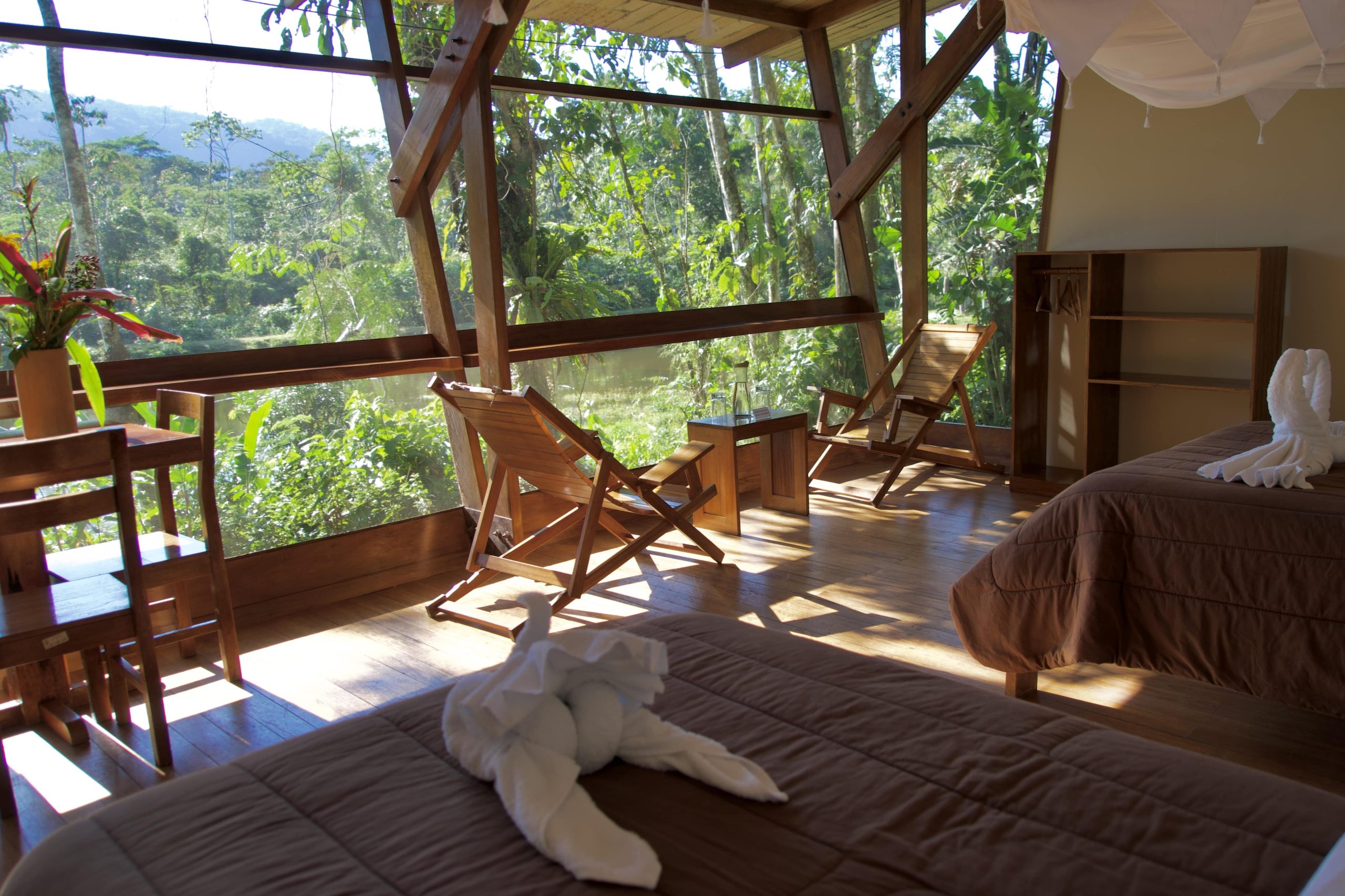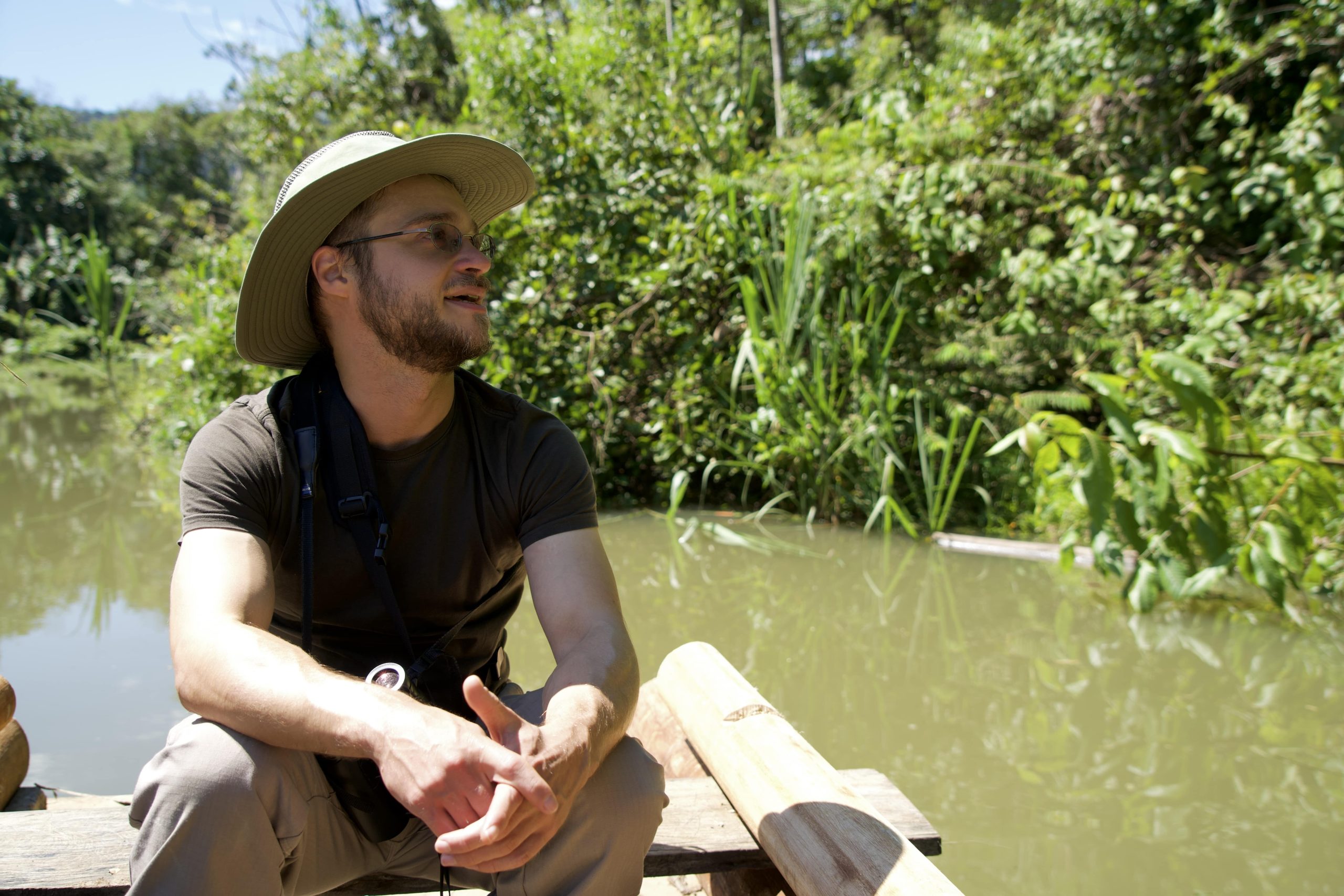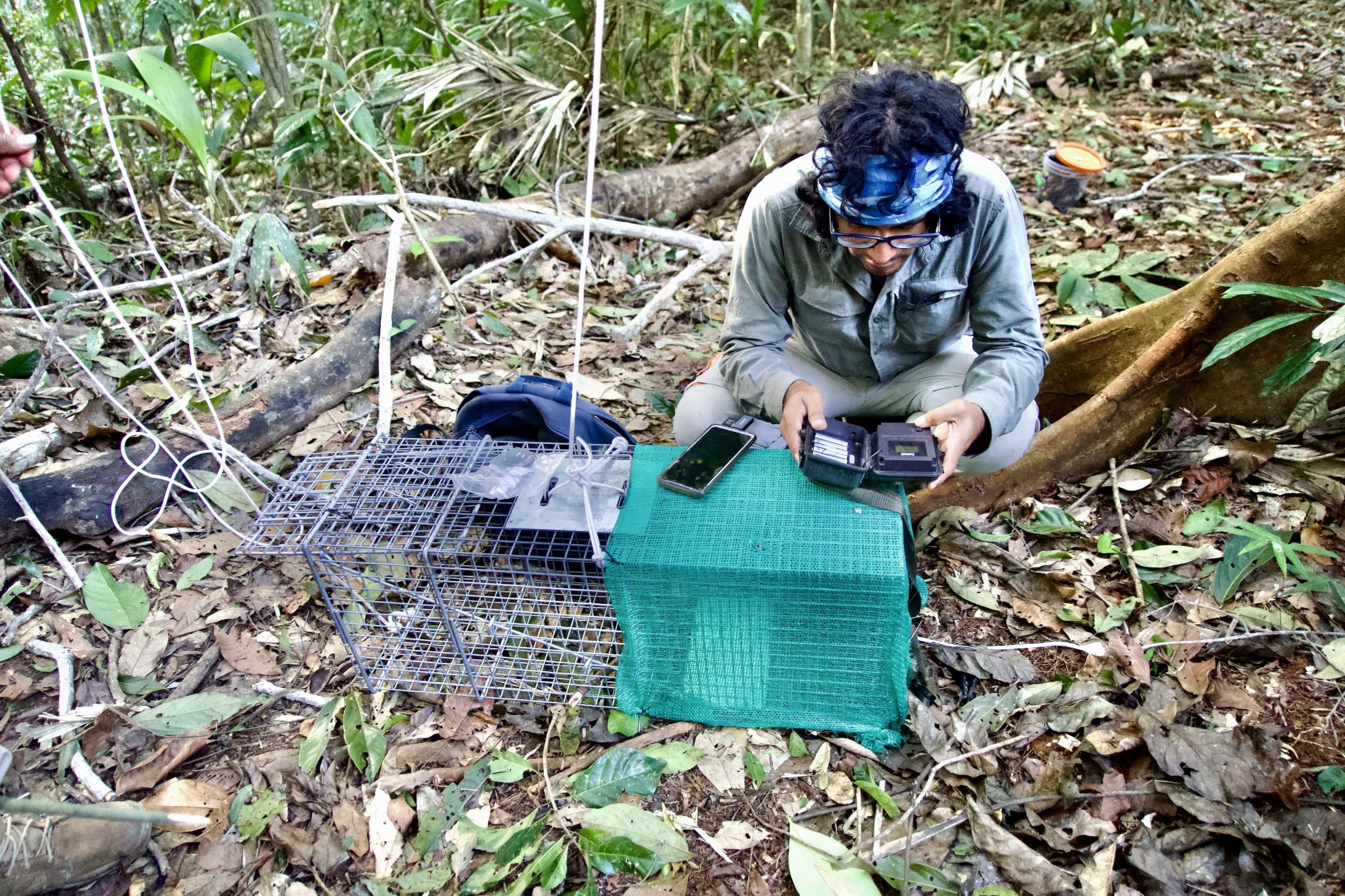I stepped carefully through the mud at the edge of the forest and out into the clearing. The stars were bright, and the night was loud. I recognized the sounds of crickets, frogs, and bamboo rats, but there were bird calls I didn’t know. A loud pew blared rhythmically across the meadow.
“What’s that?” I asked.
“It’s a Common Pauraque,” replied Reid Rumelt, an ornithologist who came to Peru to study birds at the Manu Biostation in Peru’s southern Madre de Diós region. Madre de Diós has some of the most important biodiverse hotspots in the Amazon River basin. Rumelt was working on his Ph.D. at the University of Miami and came to the Manu Biostation for the area’s biodiversity. Of the 659 birds that have been identified at the research station, he can recognize many of them from their call.
Rumelt swept his flashlight across the ground.
“There it is. See those eyes reflecting in the light? Pauraques sit on the ground and wait for bugs to fly over them, then jump up to eat them.”
Though I’d visited the Manu Biosphere Reserve before with highly trained birding guides, walking through the forest with an ornithologist took the experience to a new level. Scientists aren’t focused on my experience as a tourist the same way a trained guide would be. They’re focused on sharing their passion for their field of study and the ecosystem. It’s infectious and each researcher who walked with me in the forest left me with a new love of birds, bats, or frogs.
—
I’ve been able to interact with scientists who come from around the world to study the Peruvian Amazon because I stay at non-profit research stations in the rainforest when I’m traveling independently. In August 2022, I went to the Los Amigos Research Station, about four hours upriver from the town of Labyrinth, near Puerto Maldonado. Puerto, as locals call it, is a port on the Tambopata River, a tributary of the Amazon. In July 2023 I went to the Manu Biostation, which is a six-hour drive from Cusco.
Research centers like these are always much less crowded than the national parks and places designed for tourism. I usually stay two or three days and participate in scientists’ requests to add wildlife data to whatever platform they prefer. At Manu Biostation, that’s eBird, but at Los Amigos Research Station the scientists prefer iNaturalist.
Both Manu Biostation and Los Amigos Research Station are non-profit organizations that have created opportunities for travelers to visit as one revenue source for their scientific research and conservation work. It often works the other way around: Many for-profit companies have created an associated non-profit or non-governmental organization (NGO). Peruvian travel company Inkaterra, for example, created the Inkaterra Asociación, which manages more than 30,000 acres of Amazonian forests. Another Peruvian company, Kuoda Travel, established Kaypi Kunan, which creates educational enrichment programs for dozens of Indigenous communities in the Cusco region.

Accommodations at Manu Biostation are comfortable and rooted in the heart of conservation activities. | Photo: Heather Jasper
When considering these from a tourism context, it’s important to know exactly what kind of work a non-profit does, what the traveler’s role is, and who benefits. Whether it was established before or after a for-profit company is less important. A non-profit that is using tourism to increase funding or a for-profit company that established its own NGO or non-profit can both be effective at utilizing tourism to support and serve regeneration.
At both research stations, I stayed in beautiful cabins, though I ate meals with the researchers who stayed in much more basic lodging. I experienced just the right kind of luxury and privacy at my cabin, balanced with opportunities to talk with experts who were studying the flora and fauna that drew me to the rainforest.
When travel companies are looking for experiences for clients who want more than the most popular destinations, it’s worth searching for non-governmental organizations (NGOs) and other non-profits that host tourists, like the Manu Biostation and Los Amigos Research Station.
Buying and defending land so that tourists can see wildlife does make a difference, whether this is done by a for-profit company or a non-profit organization. Creating jobs in tourism gives people alternatives to mining and logging. Companies that pay taxes also invoke the watchful eye of the government, which can help combat narco-trafficking. Bringing international tourists to the Amazon River basin educates the world about the fantastic biodiversity that needs protection.
Yet, when international travel agencies have the choice between visiting for-profit companies and non-profit organizations, there are still several reasons to take your clients to visit a non-profit. In particular, look for organizations offering meaningful activities where travelers can participate in effective social and environmental programs.
For many people, traveling is an emotional experience. Travelers want to do things that make them feel good. When they know that some of the money they spend supports causes they care about, they’ll feel better about the trip than if they knew all the profits benefited an international corporation. In most countries, non-profits and NGOs are required to be more transparent than for-profit companies. Travelers who really care where their money goes should be able to see the organization’s finances in detail.
Another reason for travel companies to support non-profit organizations is that they usually have a specialty, such as human rights or environmental conservation. This makes it relatively easy for travel agencies to match their clients’ interests with appropriate organizations.
Where I live in Cusco, many non-profits encourage tourists to visit. Travelers interested in women’s rights and education for girls can visit Mantay and Awamaki. Those passionate about preserving the Amazon rainforest can visit Manu Biostation, Wayqecha Research Station, and Mirador Pico de Hoz.
Companies of all sizes create and support non-profits, so there are options for clients who prefer internationally recognized names or small family businesses. For example, big companies like Intrepid and small companies like Kuoda Travel have both created their own non-profits.

Ornithologist Reid Rumelt came to Peru to study birds, shown here at Mirador Pico de Hoz. | Photo: Heather Jasper
Not every company has to create a non-profit, but every company should have at least one that it funds. Travelers increasingly expect sustainable companies to develop more regenerative practices. When a company financially supports and builds activities with non-profits into a tour itinerary, it shows pride in supporting a specific organization while giving the organization an opportunity to share its work with travelers. More than simply donating money, giving travelers the chance to interact with non-profits gives these organizations agency and builds a connection that can be the highlight of a traveler’s trip.
—
The highlight of my visit to Manu Biostation was learning from scientists like Reid Rumelt how to experience the rainforest in a whole new way. I closed my eyes and listened to what researchers’ recording devices are starting to analyze with Artificial Intelligence. Listening to the forest is both a deeply human experience and an exciting frontier for how technology can enhance more traditional research methods.
I left Manu Biostation more practiced in listening to the forest as humans surely have for millenia. I also took with me a new excitement for technological advances that will help researchers learn about the rainforest.
Back home, even months later, I can still close my eyes, hear the Pauraque at night, and imagine how that forest will be better protected because of the conservation scientists I met. They are regenerating healthy ecosystems and I got to be part of that path to a better future.



